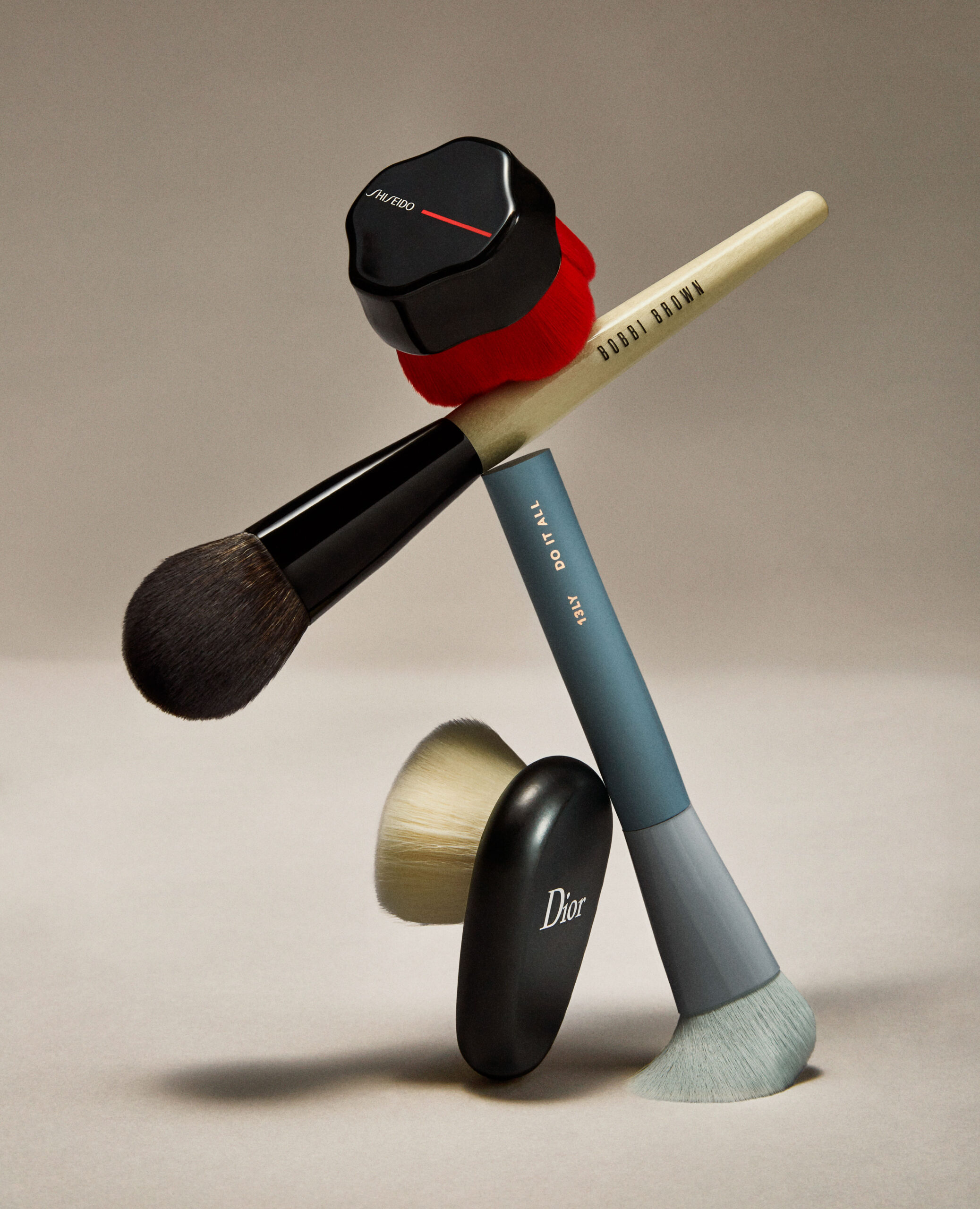“I would rather lose all my makeup than lose my brushes,” says makeup artist Sandra Yang, noting that a good brush makes applying cosmetics “exceptionally easier.”
When it comes to quality, “price is not the best indicator, but it is usually a good one,” says Larry Yeo, who has developed a line of brushes called 13LY in collaboration with Tay Yuhui, founder of Singaporean brand 13rushes. “If brushes are dirt cheap, they’re not going to be good, because making good ones is really labour intensive.” High-quality brushes are fully handmade, which, Tay says, improves durability because the bristles are properly secured in the handle by the ferrule (metal band) and won’t fall out. They also improve the look of makeup because they maintain their meticulously created shape.
Before they come to market, brushes are tested to near-destruction. “We just test for softness, durability, shedding, and performance with different makeup formulas,” Tay says. “We wash multiple times to see if they shed. We bend the bristles to see if they break. We need to see if each batch is the same as the previous one in terms of the way they blend liquids and powders to pick up. And lastly, we will bring them to our professional users and our long-time customers to test whether they work.”
One of the major innovations in modern brushes is that now synthetic fibres are more or less indistinguishable from animal hair. “These synthetic brushes can pick up product in a similar way because the tips are treated,” Tay notes. “They also feel fluffier, easier to manipulate, and softer on the skin.”
Many brands are now making brushes with novel, innovative shapes. Dior’s Backstage Face Brush No. 18 for foundation is flat and circular; Shiseido’s Hanatsubaki Hake Polishing Face Brush has four “petals” (hanatsubaki is Japanese for camellia flower) that promise to hug the contours of the face as you apply powder, liquid, or cream. U.S.-based makeup artist Claudio Riaz has created the Instant Face Brush, which is square, and Instant Smoke Brush, which has short bristles in a curved shape that skate over your lid to create a smoky eye. Perhaps the most popular innovation is the Beautyblender sponge, which Yang loves—dry, for powdering under the eyes, or slightly damp to diffuse foundation and make it look flawless. Yang buys her natural-hair brushes online from Japanese brand Hakuhodo and particularly loves British-based MyKitCo’s range of both synthetic and natural.
You can buy kits with the basics for foundation, powder, eyeshadow, and so on, but makeup artists say that’s not always the best route. “It’s important to ask what purpose this is going to serve in your makeup routine, what looks you’re going for, and what are the key tools that are going to help you achieve this,” says Marc Reagan, executive director of global artistry and consumer experience for Bobbi Brown. If you only wear blush, he suggests a blush brush for a nice diffuse finish; its rounder edges could also be used for bronzer and finish. A good foundation brush is also a basic traditional tool. Finding multiuse tools are also ways people navigate brushes because they don’t want to have “15 brushes they don’t use.”
Professional makeup artists won’t use a tool on a different face without cleaning it, but Reagan says most people should clean theirs every couple of weeks. He starts by wetting the bristles with warm water—not hot, which can melt the glue. He then adds a dollop of Bobbi Brown’s Conditioning Brush Cleanser. Yang uses vegetable oil mixed with Dawn dish soap for all but her natural-hair brushes, for which she employs Kérastase shampoo and conditioner and the occasional Olaplex treatment. “Get the suds going, and you’ll see the makeup and pigment release from the brushes,” she says. “Gently rinse them out—you’re holding them down the entire time so that the water is pulled away from the ferrule—and then squeeze out the excess water and lay them flat to dry. If you hang them off a counter or surface where there can be some airflow, they’ll probably dry overnight.” Yeo and Yang both say you should wash brushes before using for the first time, not just for hygiene but also because they can have a plasticky coating that will affect how they pick up and release makeup.
Reagan says a simple tip for powders is to press the brush into your palm or onto a tissue after you’ve loaded it up, but before you apply it, “otherwise a lot of product sits on the surface of the brush’s hairs and fibres rather than being evenly distributed.” For liquids or creams, he recommends using the back of your hand as a palette to more easily control the amount you put on your face.
The key to elegant brush application is practice. And at least with makeup, the worst that can happen is that you have to wash it off and start again.
Read more from our Autumn 2024 issue. Set Stylist: Wilson Wong.









